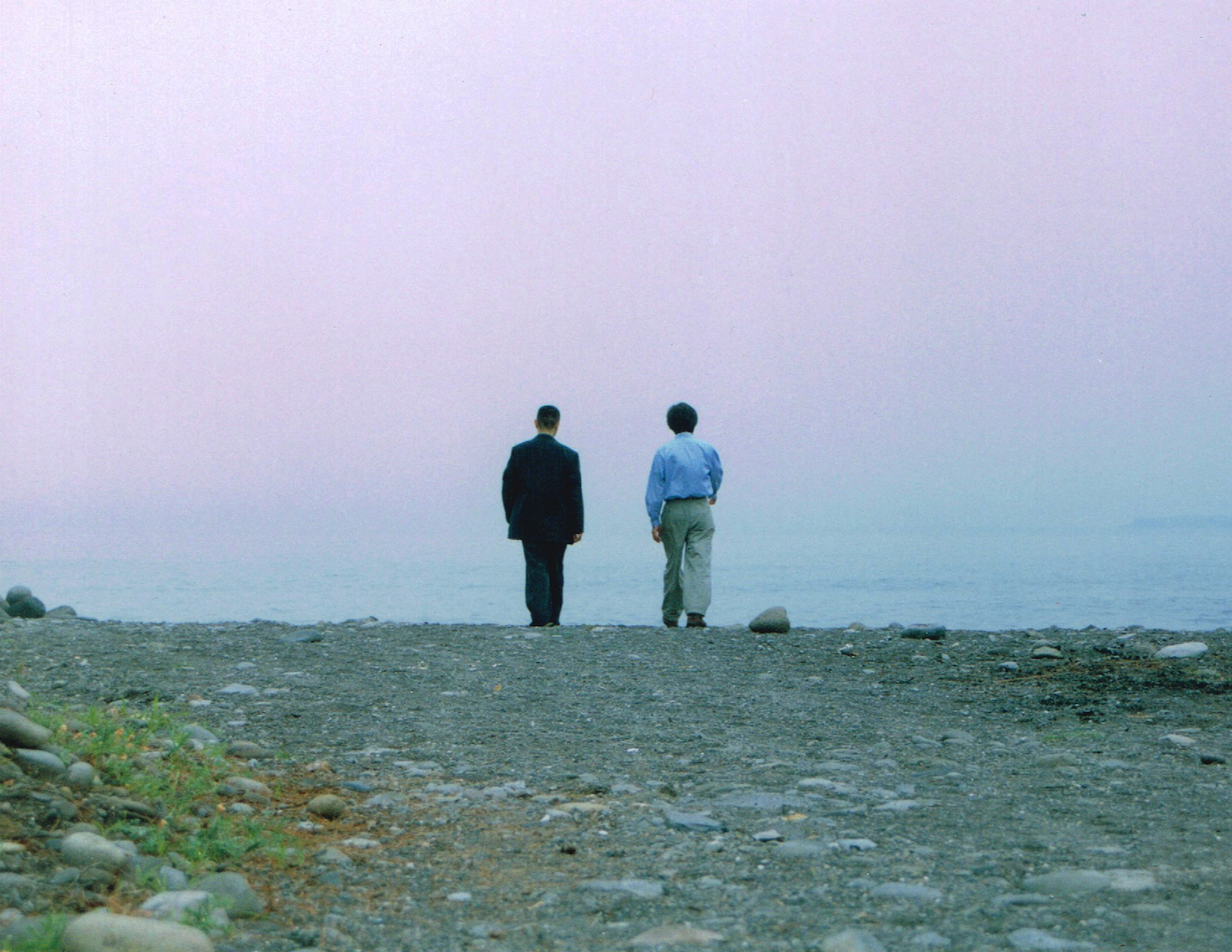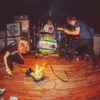As Visible Cloaks’ own Spencer Doran first outlined on his Kankyō Ongaku compilation last winter, Japan had an entire industry devoted to environmental music during its economic boom. Imagine Muzak that’s actually moving, or ambient excursions underwritten by corporate entities, and you’re about halfway there in terms of understanding this surreal time period.
Two of the leading cult figures from that era — from the late ’70s onward, really — were Makoto Inoue and Yasushi Yamashita. Their Inoyama Land project could be heard rippling across both physical releases and temporal spaces like museums, theaters, and site-specific installations. They’re still active today, too, as recently heard at the RBMA Tokyo festival.
Commissions strives to make sense of it all with a wide, decade-spanning range of pieces rarely heard on this side of the world. (Good lucking find any of it outside Japan.) In the following exclusive feature, Inoue and Yamashita share a special track-by-track commentary translated by Yosuke Kitazawa of Light in the Attic and its new archival imprint Empire of Signs, which is run by Doran and Root Strata co-founder Maxwell August Croy….
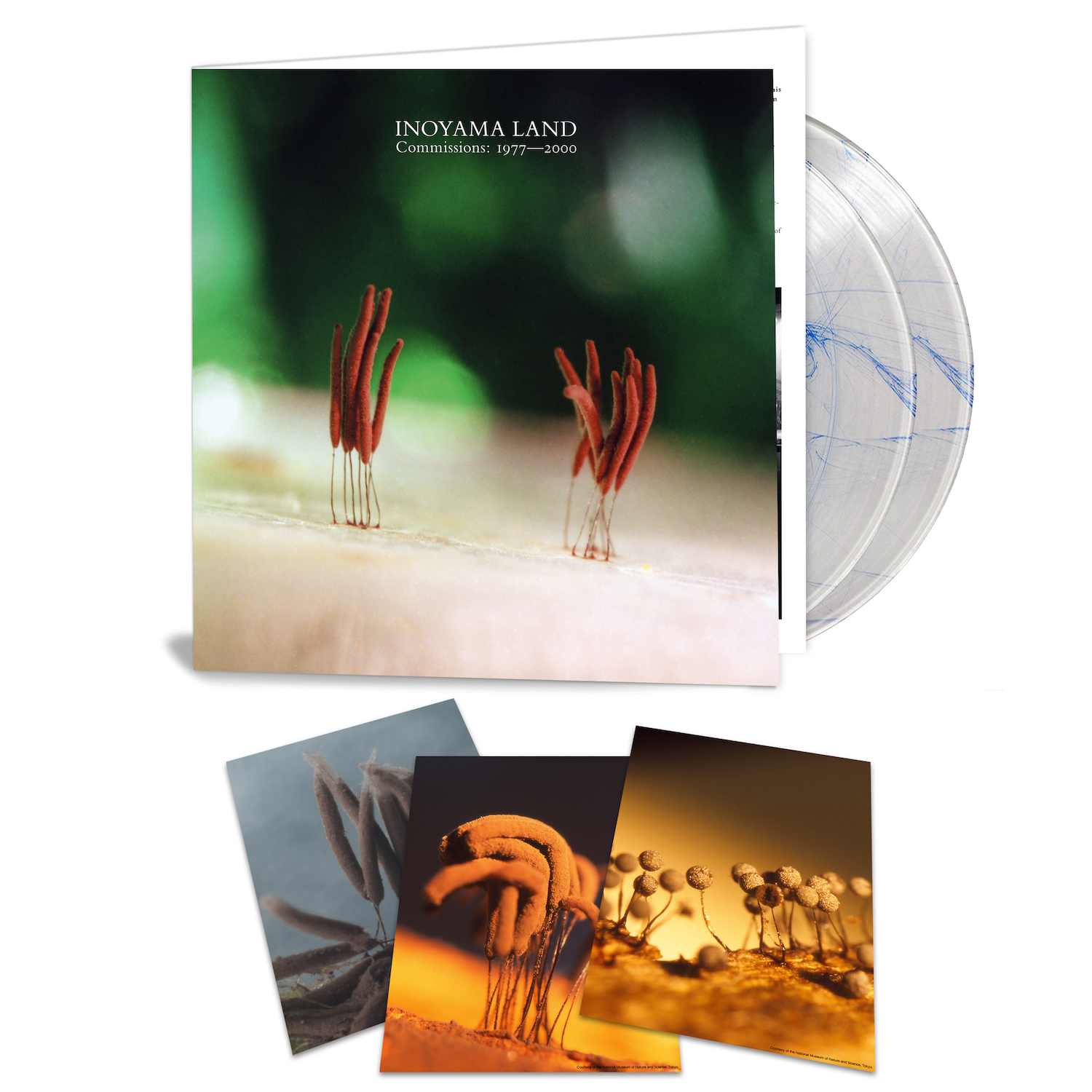
Commissions is a collection of Inoyama Land recordings made between 1977-2000, taken from the albums INOYAMALAND, Music for Myxomycetes, Egyptology, and Heart.
Inoyamaland was originally released in 1997 on Crescent, the label affiliated with the environmental music production company Sound Process Design. The album collects works initially created as environmental music (for park fountains, greenhouses, a theme park choo choo train); music for makeup and car commercials; and a sound installation for a gallery art show. “Garasudama” (4) and “Kodama” (10) were exceptions in that they were initially recorded purely as sound experiments. Those two were recorded in 1985.
Music for Myxomycetes is comprised of environmental music created at the end of the 20th century, plus recordings made for our never-completed third album.
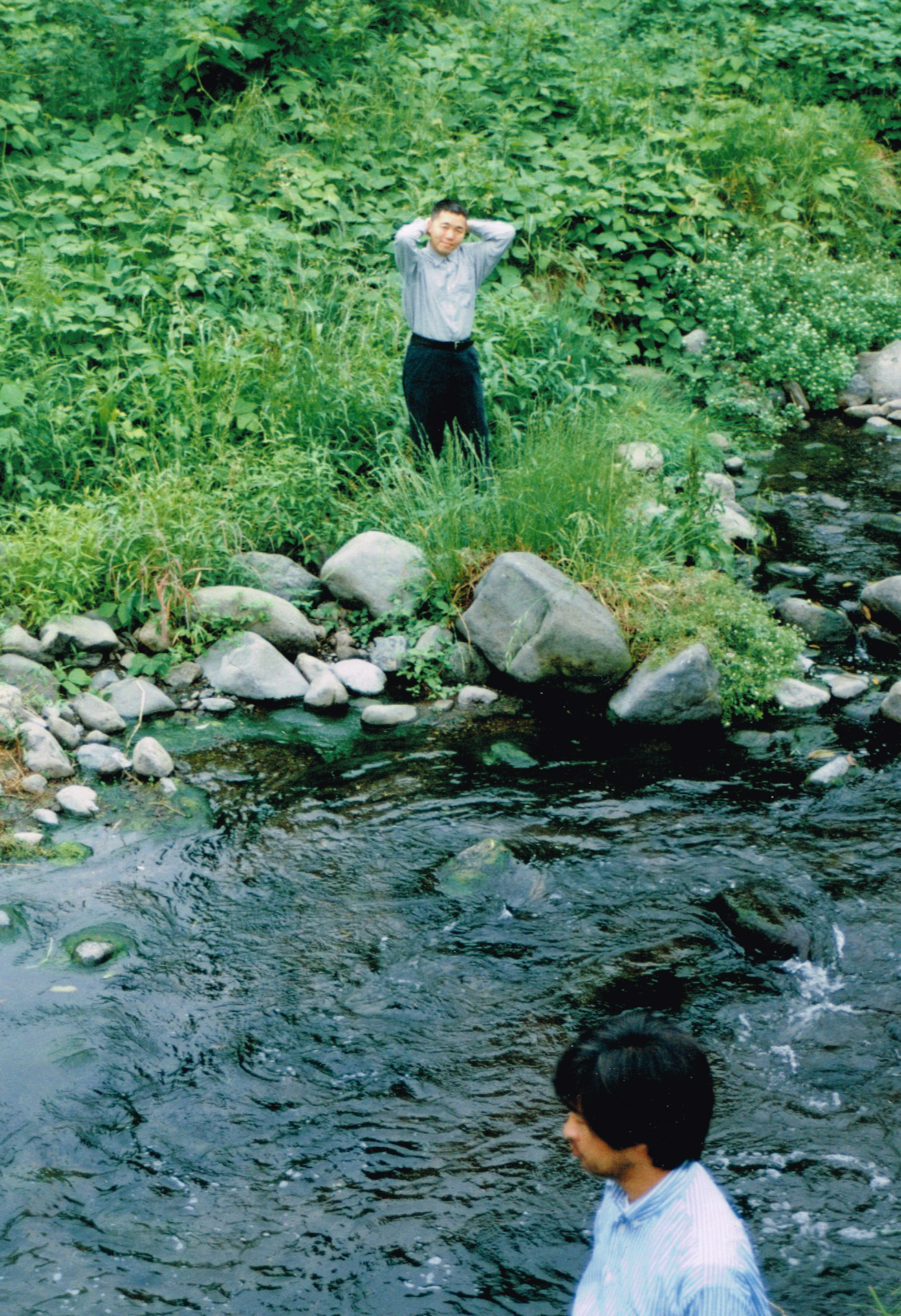
“Candy Floss” (12) and “Candy” (15) are segments of music originally made to be played within the World of Myxomycetes exhibit at the National Museum of Nature and Science in Ueno, Tokyo, which ran from 1997-1998. This music was played at a low volume so as to complement and not overwhelm each element of the exhibit, which included delicate and spiritual photography of the various shapes and colors that comprise the ecology of myxomycetes, and dioramas that depicted the damp terrain of dimly lit forests covered in fallen leaves.
“Hair Air” (1) and “Bananatron” (7) were intended to be included in the third album Revisited, which was never finished. A few songs from that project were mixed to be a part of Music for Myxomycetes. For Commissions, the above two songs were newly transferred from the original tapes for Revisited.
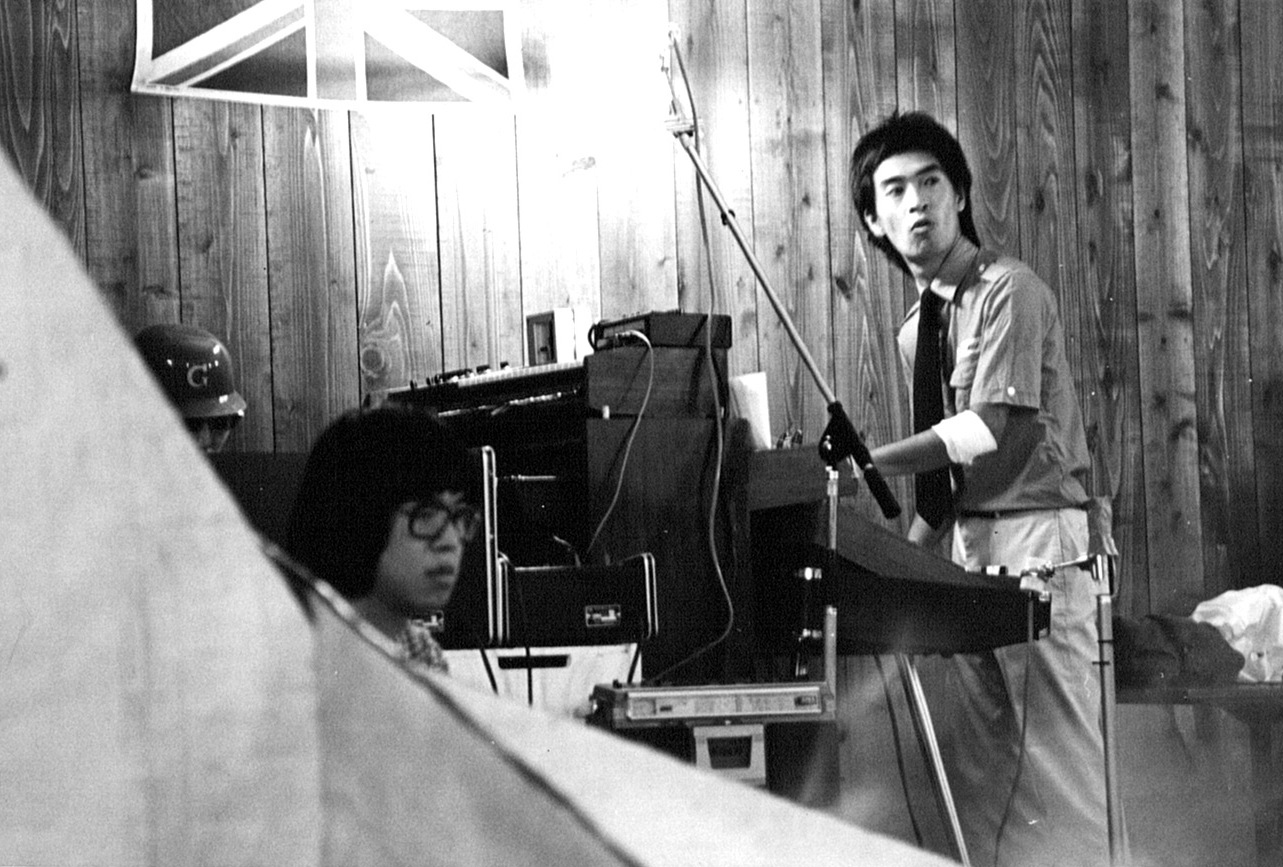
“Morn” (9) is also taken from Myxomycetes, but it was originally written for the 1977 avant-garde stage production called Collecting Net. This play marked the first time we collaborated on music for a Koichi Makigami production. These particular performances were heavily inspired by the methods employed by the Lumiere & Son experimental theater company in London, where Makigami had been living in 1974. In 1983 several songs from that production were re-recorded on analog synthesizers, and were released on Inoyama Land’s first album Danzindan-Pojidon, produced by Haruomi Hosono.
Heart is comprised of recordings of environmental music pieces originally produced in 2000 for the Kankaku Museum (Museum of the Senses) in Miyagi Prefecture. Kankaku Museum is an interactive museum that allows visitors to explore the various senses that we possess, such as sight, hearing, smell, and touch. The space is divided into several zones, each representing a different sensation that the visitor could experience: walking on air while enveloped in light; hear the faint sounds emanating from deep waters; bathe in mist in a half moon-shaped corridor; learn the simple textures of washi paper and woven fabrics; take in a hint of fragrance and aroma from an imaginary orchard. Such sensations were our inspirations at the time this music was written. We’ll leave it up to the listener to figure out which tracks were written for which zone.
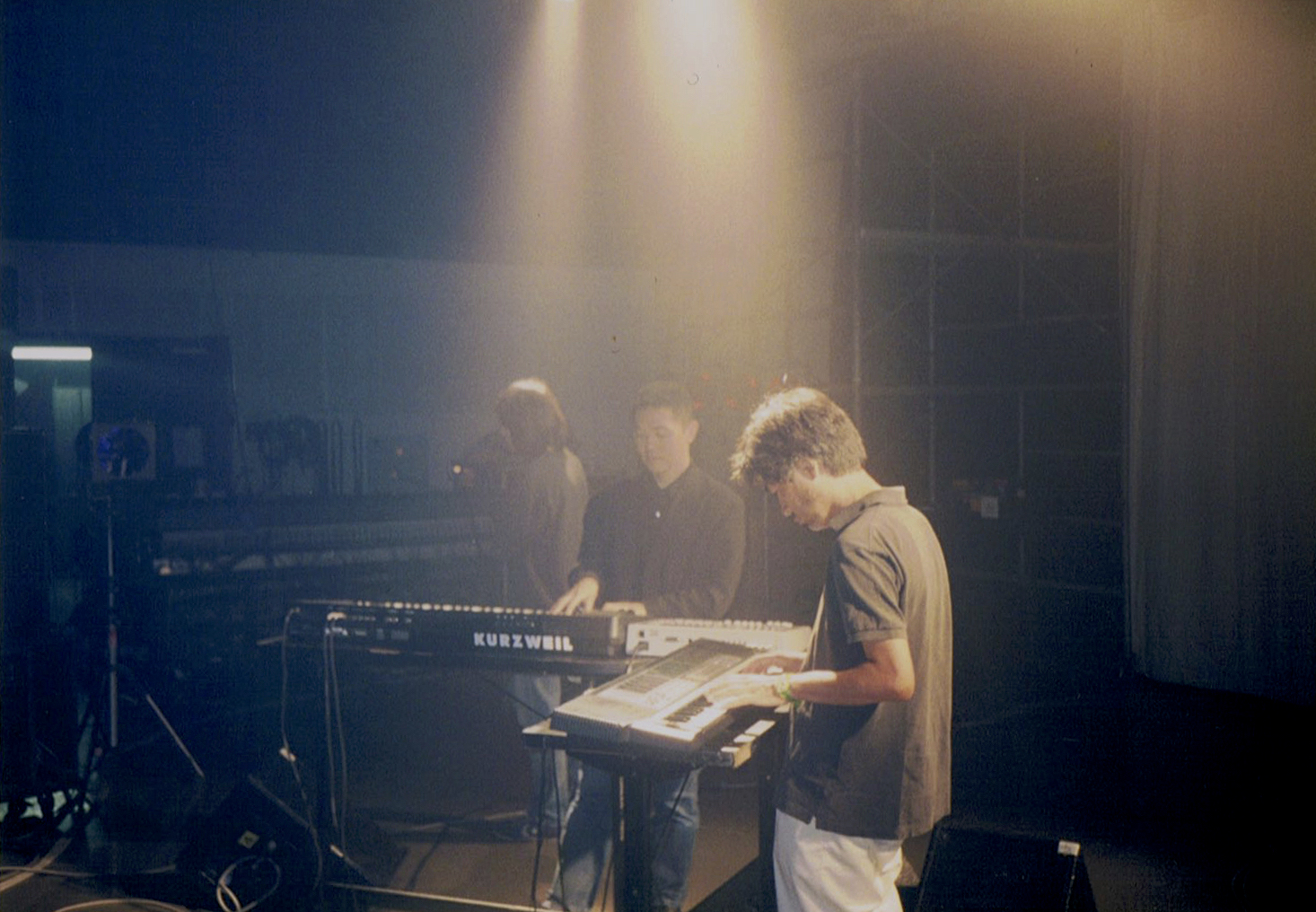
“Cycle” (2), “Skyfish” (6), “Fairy Tale” (8) were taken from Heart. These pieces were initially played back with as much space as possible between each sound element. They weren’t meant to be listened to as music; rather they were designed as artificial natural sounds to be dispersed throughout the physical space, to be experienced subliminally by the visitors. These sounds would occasionally be heard from the inconspicuously placed speakers within the zones, stealthily tickling the semicircular canals of each visitor.
Egyptology is a collection of music originally written for Koichi Makigami’s 2000 production of Richard Foreman’s Egyptology (My Head Was a Sledgehammer). The song titles are all derived from Japanese translations of passages taken from the play. Foreman made no distinction between the stage direction and the dialogue, and the production began by determining where to place the music upon the memo-like piles of words. “Soushiyou To Shiteiru” (3), “Aa Egypto” (5), “Ougon No Sara” (11), “Watashikara Ubawanaide” (13), “Anatano Yushoku No Tameni” (14), and “Sekai No Owari” (16) were among the 26 pieces Inoyama Land composed for the production, which we performed from the side of the Egyptian-inspired stage set, in sync with the actors on stage.
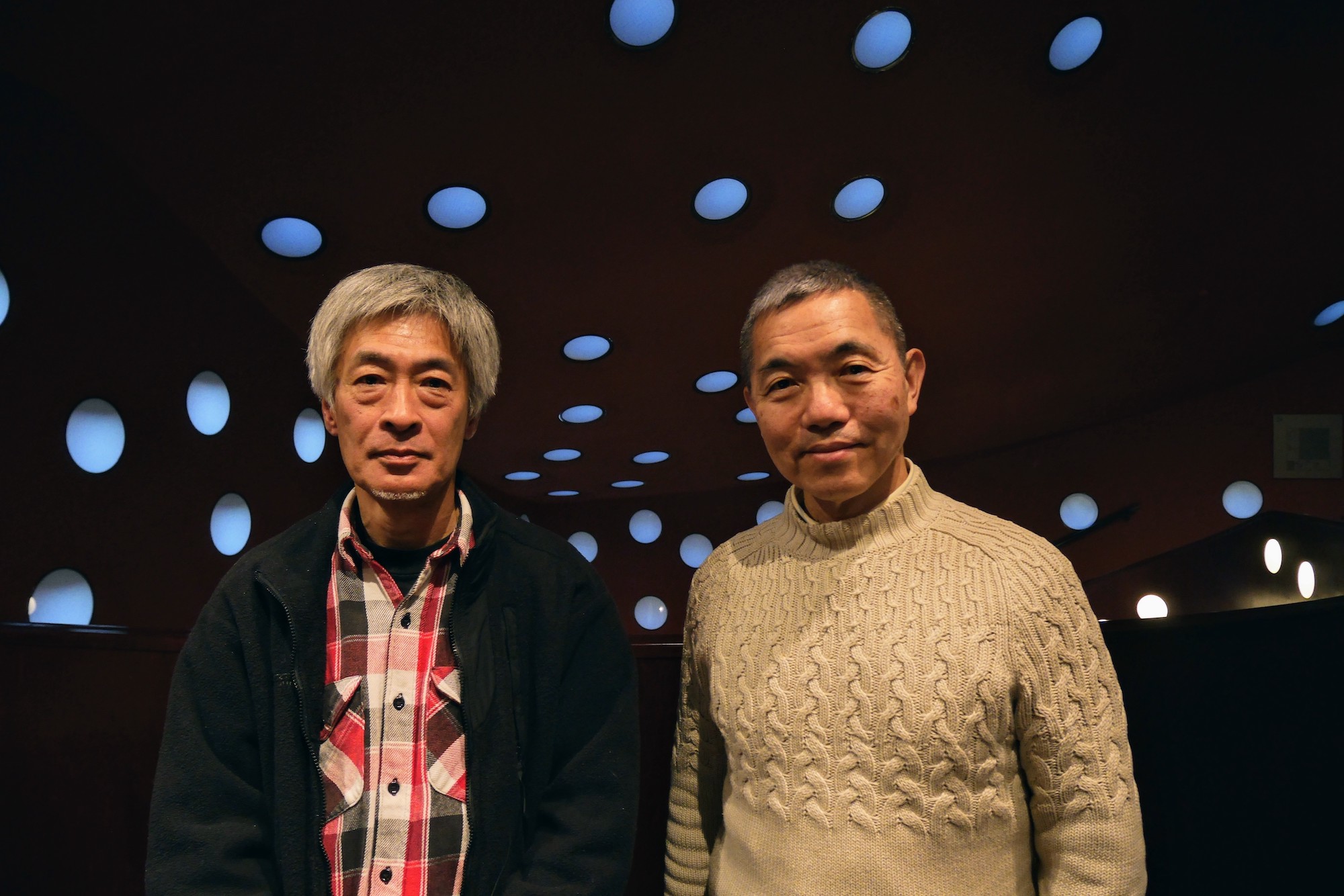
Commissionsは、INOYAMA LANDが1978年から2000年にかけてレコーディングした作品を納めた4枚のアルバム、『INOYAMALAND』『Music for Myxomycetes』『Egyptology』『Heart』から選曲されました。
INOYAMALANDの2ndアルバム『INOYAMALAND』は、1997年に環境音楽制作会社SOUND PROCESS DESIGNのレーベルCRESCENTよりリリースされました。そのアルバムに収録した曲は、美術展のサウンド・インスタレーション、公園の噴水や大温室、テーマパークのおとぎ列車、化粧品や自動車タイヤのCM、などのために作られましたが、例外的にGarasudama(4)とKodama(10)は純粋な音遊びの記録として作品化しました。録音は1985年です。
『Music for Myxomycetes』は20世紀の終わりに手がけた環境音楽と、完成しなかった幻の3rdアルバムのための録音が母体となっています。
Candy Floss(12)とCandy(15)は1997年から1998年にかけて上野の国立科学博物館で開催された「変形菌の世界」企画展の館内環境音楽の一部です。その音楽は多様な形態と色彩を持った変形菌の生態を写した神秘的な写真や、湿った落ち葉に覆われた薄暗い森の大地を模したジオラマなどの周囲で、目を凝らさないと見えてこない粘菌のように、極めて小さな音量で再生されました。
Hair Air(1)とBananatron(7)は、本来3rdアルバム『Revisited』に収録する予定で録りためていた曲でしたが、そのアルバムは完成することなく、一部の曲が『Music for Myxomycetes』の構成曲としてミックスされていました。今回、Commissionsへの収録のために、この2曲を『Revisited』のマスターテープから直接ダビングしました。
Morn(9)もこのアルバムからの選曲ですが、本来は1978年に制作された前衛劇『COLLECTING NET』のために作曲した曲のひとつです。この芝居はINOYAMALANDのメンバー井上誠と山下康が巻上公一のプロデュースによって共同で音楽制作を始めた最初の仕事でした。このパフォーマンスは1974年に巻上が在籍していたロンドンのExperimental theater company であるLumiere & Sonの手法に強い影響を受けています。1983年にはその構成曲のいくつかをアナログシンセサイザーで再演奏し、INOYAMALANDの1stアルバム『DANZINDAN-POJIDON』(細野晴臣プロデュース)としてリリースしました。
『heart』は、2000年に宮城県にオープンした『感覚ミュージアム』のための環境音楽を再構成したものです。『感覚ミュージアム』とは視覚・聴覚・嗅覚・触覚といった、私たちの持っている”感覚”をテーマとする体感型ミュージアムです。館内はいくつものゾーンに仕切られていて、来訪者はそれぞれのゾーンで、光に包まれて中空を歩き、地底湖のかすかな水音を聞き、半月形に解放された回廊に立ち込めるミストを浴び、素朴な織物や和紙などの触感を知り、香りだけをヒントに架空の果樹園をイメージします。これらは作曲時の初期設定です。今現在、どのゾーンでどの曲が使用されているのかは、実際にミュージアムを訪れて探してみてください。
そのアルバムからはCycle(2)、Skyfish(6)、Fairy Tale(8) の3曲が選曲されました。これらの曲は、実際にはもっと音と音の空間を広げて再生されました。なぜなら、これらは音楽として聴かれるのではなく、空間全体に広がる架空の自然音として無意識下で感知されるようにデザインしたからです。ゾーン内に巧妙に隠された複数のスピーカーから時折流れ出すこれらの音響は、来訪者のSemicircular canalsをこっそりとくすぐりました。
『Egyptology』は2000年に巻上のプロデュースで上演されたRichard Foreman作の前衛劇”Egyptology (My Head Was a Sledgehammer),”のための舞台音楽集です。曲名はすべて戯曲の一節を日本語訳した際の発音から採られています。この戯曲には台詞とト書きの区分けが一切なく、まるでメモのような言葉の集積の、どこに音楽を当てるのかを探ることから作業は始まりました。
INOYAMALANDはSoushiyou To Shiteiru(3)、Aa Egypto(5)、Ougon No Sara(11)、WatashikaraUbawanaide(13) 、 Anatano Yushoku No Tameni(14)、Sekai No Owari(16) を含む26曲をこの戯曲の舞台公演のために作曲し、エジプト風に装飾された舞台の隅に楽器をセットし、俳優たちの演技に合わせて演奏しました。
